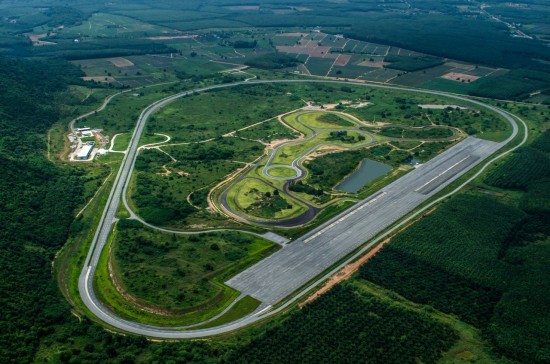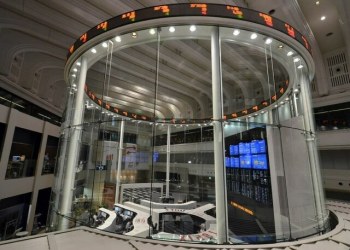Tokyo – The Yokohama Rubber Co., Ltd., has completed an expansion of the Tire Test Center of Asia, the company’s comprehensive tire proving ground in Thailand’s Rayong Province. A ceremony marking the conclusion of related construction was held at the site on October 9. The expansion adds four new test courses – a 2.5-kilometer dry-test course and a 1.5-kilometer wet-test course for handling tests, a skid pad, and a corner hydroplaning test road. The two handling test courses enable the testing of overall tire performance and compatibility with specific vehicles under dry and wet road conditions, while the skid pad is used for testing tire grip performance on wet roads. The corner hydroplaning road is used to test the overall water drainage performance of the tire and its tread pattern. Expansion of the Thai proving ground enables Yokohama Rubber to conduct complete tests of its tires’ handling and vibration performance.
 The Tire Test Center of Asia opened in April 2009. The 1.69-million square meter site was initially equipped with a 4.1-kilometer high-speed track with a 1-kilometer straightaway enabling high-speed running tests of over 200 km/h, a multipurpose track covering approximately 100,000 square meters, a 4.2-kilometer course that encircles the high-speed course and reproduces general road conditions in Asia, and a rough road course for testing tire durability. The 1km multipurpose track enables testing tire performance during high-speed lane changes while driving in a slalom pattern. It also is equipped with a wet-test course and a special course that enables evaluation of ride comfort and noise generation.
The Tire Test Center of Asia opened in April 2009. The 1.69-million square meter site was initially equipped with a 4.1-kilometer high-speed track with a 1-kilometer straightaway enabling high-speed running tests of over 200 km/h, a multipurpose track covering approximately 100,000 square meters, a 4.2-kilometer course that encircles the high-speed course and reproduces general road conditions in Asia, and a rough road course for testing tire durability. The 1km multipurpose track enables testing tire performance during high-speed lane changes while driving in a slalom pattern. It also is equipped with a wet-test course and a special course that enables evaluation of ride comfort and noise generation.
Prior to the establishment of the Tire Test Center of Asia, Yokohama Rubber’s tire testing was centered at two proving grounds in Japan―the comprehensive tire proving ground D-PARC and the specialized winter tire proving ground T-MARY. Sensing a need for a larger facility to service its growing global tire business, Yokohama Rubber decided to establish a new tire proving ground in Thailand, which has become Asia’s automotive capital and is often referred to as the Asian Detroit. Thailand was also chosen because of its rather stable climate, which enables tire evaluations under the same conditions throughout the year.
Source:



























